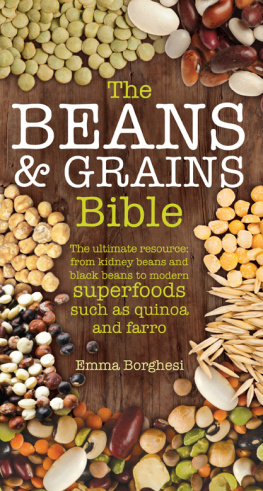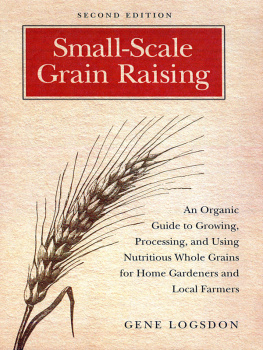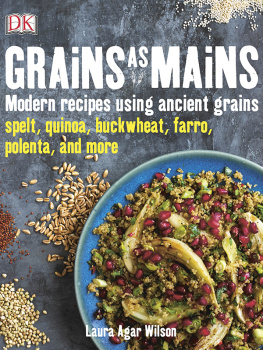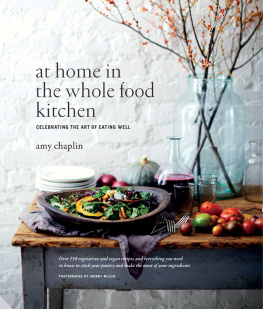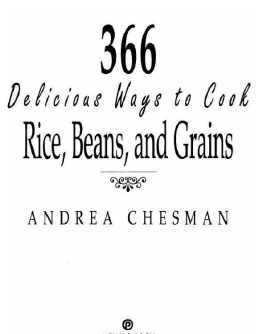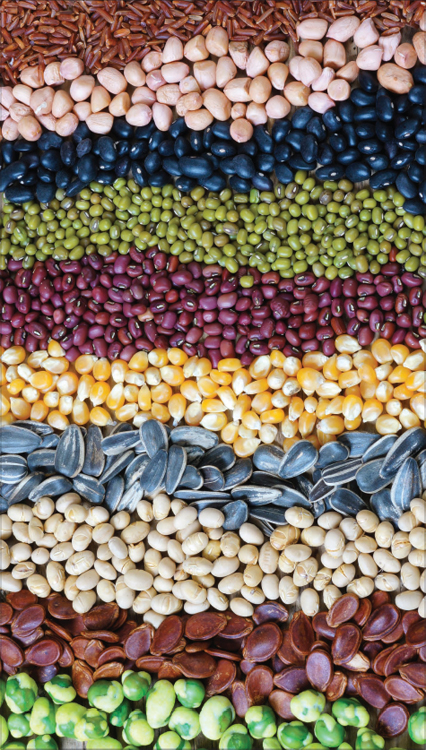Whats So Great
About
Beans and
Grains?
EVERYONE KNOWS BEANS AND GRAINS ARE HEALTHY, AND MOST PEOPLE KNOW THEYRE DELICIOUS, TOO. BUT WHAT EXACTLY IS SO SPECIAL ABOUT THEM?
ITS ALL ABOUT THE PROTEIN, ENERGY-GIVING CARBS, FIBER, FLAVOR, AND SUSTAINABILITY.
The Great Protein Package
What many people dont realize is that mixing beans and grains together in the same meal or eating a variety of beans and grains over the course of a day will provide perfect protein. This dispels the myth that meat-free and low-meat diets are lacking in complete protein.
The simple process of pairing one source of protein, such as beans, with another complementary protein, such as grains, to provide a complete protein source was once thought to be complicated and time-consuming. Not surprisingly, many people abandoned the idea in a sea of confusion about amino acids. But at least part of this resistance was that it focused on vegetarian food sources at a time when the idea of eating meat as a necessary part of a healthy diet was deeply entrenched.
Conversely, meat-free diets were regarded with suspicion and thought of as lacking in nutritionso much so that, at times, the scientists researching the benefits of meat-free diets found themselves in the position of needing to understate matters, so as not to upset the food and dietary establishment.
Recently, though, there has been a surge of interest .)
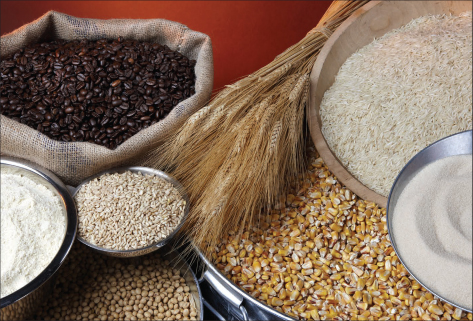
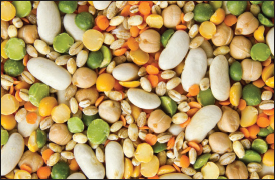
Fast Fact
Beans are the worlds most concentrated source of plant-based protein, and they work together with grains to provide a complete source of protein.
And Theres More
The protein benefits are only one part, albeit a large part, of the brilliant beans-and-grains equation. All sorts of other nutritional benefits come into play as well. Beans and grains are both great sources of dietary fiber, so eating them together is an easy way to meet the bodys fiber requirements. For the most part, they are also low in fat and excellent sources of low- and medium-GI carbs. And they boast an impressive array of vitamins, minerals, and other plant nutrients (called phytonutrients), such as antioxidants.
Fast Fact
Beans and grains are great sources of energy-giving carbohydrates and dietary fiber.
Nutrition aside, diets high in beans and grains are sustainable from an ecological and economic point of view. Growing beans and grains is less demanding on the planet than animal-based agriculture; beans even support the planet because of their amazing ability to put essential nitrogen back into the soil and make it available to other plants and animals. Further, beans and grains do not require the same high investment in stock necessary for animal farming, so they can be grown economically from seed up. In this way, they also lend themselves to small-scale growing in gardens and communal plots, without the need for special equipment.
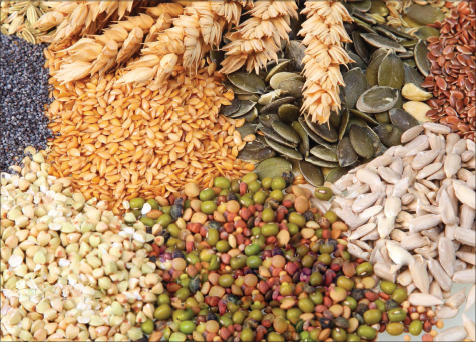

Fresh salad made with quinoa, corn, avocados, tomatoes, and beans.
High-yielding beans are great plants to grow in a home vegetable garden, but lots of grains can be grown this way, too. So its not hard to see the economic importance of beans and grains to disadvantaged or isolated communities that have a limited ability to raise animals, or to heavily populated areas where food demands are high. In fact, since ancient times, smaller communities all over the world have been able to sustain themselves through their own homegrown produce and have not had to rely on commercially farmed or grown produce. The driving force for these practices is as simple and primitive as life itself: the need to eat. Meanwhile, contemporary organic farming on both large and small scales reflects renewed interest in these long-held practices, but in this case, the driving forces are primarily sustainability, nutrition, and an increasing demand for organic foods.

